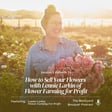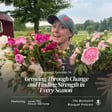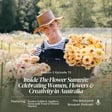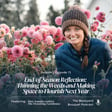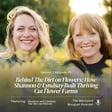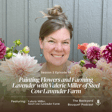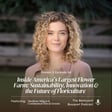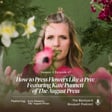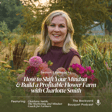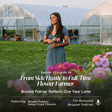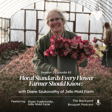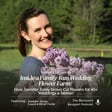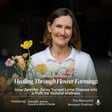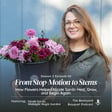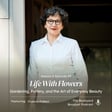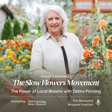
Ep.20: Sunflower Steve: A Farmers Journey of Passion & Perseverance
In this episode of The Backyard Bouquet Podcast, Steve Kaufer, also known as Sunflower Steve, shares his journey from planting a prairie garden to becoming a renowned sunflower seed breeder. Starting with planting native prairie flowers in Wisconsin, Steve's passion for flowers has led him to cultivate unique sunflower varieties over the last 20 plus years. Through trial and error, Steve established relationships with large retailers and wholesalers, eventually focusing on high-volume production of sunflowers and zinnias. His innovative methods, such as using birds of prey to deter rodents, set him apart in the flower farming industry.
Steve's dedication to seed breeding led to the discovery of a rare double-flowering sunflower named Gigi, sparking his interest in enhancing sunflower genetics. By carefully selecting and cross-pollinating different varieties, Steve has created stunning bicolor and maroonish colored sunflowers. Despite challenges like frost and pest control, Steve's unique approach to flower farming showcases the intersection of nature, innovation, and dedication in creating beautiful blooms. Join Steve on a journey through the vibrant world of sunflowers and the art of seed breeding, where each petal tells a story of resilience and growth.
Shownotes:
https://thefloweringfarmhouse.com/2024/05/12/ep-20-growing-sunflowers-with-sunflower-steve/
In This Episode You’ll Hear About:
- 01:15-05:16: Steve's Journey: From Flower Farming to Sunflower Breeding
- 13:19-16:23: Maximizing Efficiency and Planning for Contingencies
- 0:26-23:33: Evolution of Steve’s Flower Farm
- 24:35-32:01: From Hobby to Breeding Success
- 37:51-41:40: Protecting Sunflowers from Rodents and Birds
- 01:06:30-01:09:47: Sunflowers and Camp
- 01:10:33-01:14:33: Breeding and Growing Unique Sunflowers
Learn More About Sunflower Steve:
- · https://sunflowersteveseedco.com/
- · https://www.instagram.com/sun_flower_steve
- · CBS Sunday Morning: https://www.cbs.com/shows/video/0Hr_4AyQAfnOZQeb44TCkxu_omlTvF4E/
- · Camp: https://www.crosswoods.camp/
***Rate, Review, & Follow The Backyard Bouquet***
If you enjoyed this episode, will you please consider leaving the podcast a review? Your review helps make the podcast more discoverable to others and allows me to continue creating more episodes. I'd love to know what you enjoyed most about the episode.
New episodes are coming every Tuesday to help keep your garden blooming!
Sign up for The Flowering Farmhouse newsletter: https://thefloweringfarmhouse.myflodesk.com/nlw4wua8s3

